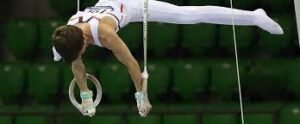Introduction to Gymnastics
Gymnastics, with its blend of grace, athleticism, and precision, stands as a testament to the human body’s remarkable capabilities. From ancient origins to modern-day competitions, gymnastics has evolved into a captivating sport that captivates audiences around the globe.
Types of Gymnastics
Gymnastics encompasses a diverse range of disciplines, each with its unique focus and skill set. Artistic gymnastics showcases feats of strength and agility, while rhythmic gymnastics combines elements of dance and performance. Trampoline gymnastics adds an aerial dimension, pushing the boundaries of acrobatic skill and daring.
Fundamental Skills in Gymnastics
At the core of gymnastics lie fundamental attributes such as flexibility, strength, balance, and coordination. Athletes devote countless hours to honing these skills, laying the foundation for mastery in their chosen discipline.
Artistic Gymnastics
Artistic gymnastics showcases a breathtaking display of athleticism and artistry. From gravity-defying leaps on the vault to graceful routines on the balance beam, athletes push the boundaries of physicality and precision in pursuit of perfection.
Rhythmic Gymnastics
Rhythmic gymnastics infuses elements of dance and expression into its routines, captivating audiences with its elegance and grace. Performers manipulate apparatuses such as hoops, balls, ribbons, and clubs, weaving intricate patterns of movement and rhythm.

Trampoline Gymnastics
Trampoline gymnastics takes flight, elevating athletes to dizzying heights as they execute flips, twists, and somersaults with unparalleled precision. The trampoline serves as a canvas for aerial artistry, where athletes push the limits of human potential with every bounce.
Benefits of Gymnastics
Beyond the spectacle of competition, gymnastics offers a host of physical and mental benefits. Athletes develop strength, flexibility, and endurance while cultivating discipline, focus, and resilience that extend far beyond the gymnasium.
Gymnastics in Competition
Gymnastics competitions, from the Olympic stage to local meets, showcase the pinnacle of human achievement and athleticism. Athletes train tirelessly for moments of glory, pushing themselves to the limit in pursuit of excellence.
Training and Preparation
Success in gymnastics requires unwavering dedication and discipline. Athletes adhere to rigorous training regimens, guided by coaches and mentors who instill values of perseverance, determination, and sportsmanship.

The Role of Coaches and Mentors
Coaches and mentors play a pivotal role in the development of gymnasts, providing guidance, support, and expertise to help athletes reach their full potential. Their mentorship extends beyond the gym, shaping athletes into resilient and confident individuals.
Challenges and Rewards
The journey of a gymnast is fraught with challenges, from grueling training sessions to the pressure of competition. Yet, amidst the trials and tribulations, the rewards are abundant, as athletes discover strength, resilience, and self-discovery.
Gymnastics as an Art Form
Gymnastics transcends mere athleticism; it is an art form that celebrates the beauty of movement and expression. Through fluid routines and dynamic performances, gymnasts weave stories of passion, grace, and determination.
Inclusivity and Diversity
Gymnastics welcomes participants of all ages, backgrounds, and abilities, fostering a sense of inclusivity and diversity within its ranks. The sport thrives on its ability to unite people from diverse cultures and communities under a shared passion for excellence.
Conclusion
In the world of gymnastics, beauty meets brawn, and grace meets power. From the soaring heights of the trampoline to the delicate balance of the beam, gymnastics mesmerizes and inspires, reminding us of the boundless potential of the human spirit.
FAQs
- What age can children start gymnastics?
- Children can start gymnastics as early as preschool age, typically around 3 or 4 years old.
- Is gymnastics only for females?
- No, gymnastics is open to both males and females, with separate competitions and skill sets for each gender.
- What are some common injuries in gymnastics?
- Common gymnastics injuries include sprains, strains, fractures, and overuse injuries like tendonitis.
- Can adults participate in gymnastics?
- Yes, adults of all ages can participate in gymnastics classes and programs designed for beginners and recreational athletes.
- How can I get started in gymnastics?
- To start gymnastics, find a local gym or club that offers classes for your age and skill level and schedule a trial session to get started.
